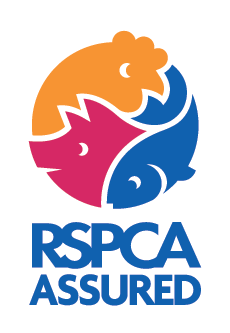What is a Flexitarian?
Flexitarians or ‘casual vegetarians’ as they are sometimes called are people who eat a plant-based, or at least meat-free, diet most of the time but also like to enjoy meat or fish occasionally.
Over the past few years, many people have begun to choose a flexitarian diet. As well as the potential health benefits, being a flexie reduces your carbon footprint and is a great way to help improve farm animal welfare.

What Foods Do Flexitarians Eat?
As the name suggests, a flexitarian can eat anything they want to. But the aim of a flexitarian is to eat little meat and animal products and more plant-based foods. If you are thinking of becoming a flexitarian, it means cutting down, not cutting out your meat intake and when you do choose to eat meat, you choose the higher welfare option.
Since they don’t eat meat that often, flexitarians are ideally placed to support higher welfare farming. There’s no need to buy cheap chicken or budget meat products, instead, you can spend a little more on meat and make sure you invest in organic, free-range, higher-welfare products.
What Can’t A Flexitarian Eat?
There’s nothing a flexitarian can’t eat. It’s not about absolutes, but rather about quantity. A flexitarian is only trying to cut down, so while they might go days or even weeks without eating meat, they leave their options open to eat meat, fish, eggs and dairy when they want to.
How Often Do Flexitarians Eat Meat?
That depends on how flexible the flexitarian is. It all comes down to personal choice and how experienced you are. If you’re just starting out on your flexitarian journey, we’d recommend trying to have two meatless days per week. More advanced flexers might skip meat three or four days a week, and flexie-veterans may have five, six or even more meatless days.
There’s no need to rush. Go at your own pace and cut down at a rate that you’re comfortable with. A good start would be to try and reduce something every day. If you’re used to eating meat for lunch and dinner, even on your meat-eating days, try and cut down to only eating it once. It’s a great start to your journey, and it will give you a sense of achievement that you’re making a real change every day.
Can Flexitarians Eat Dairy?
Yes, flexitarians can eat and drink dairy, but always with a view to reducing the amount. You don’t want to just cut down on meat and just increase your dairy consumption (cheese can be so tempting). A meat-free day could also be a dairy-free day as you explore other foods. Flexitarianism is a great way to discover new foods and sources of protein. There are a lot of new fruits, veg and even pulses out there that you might not have tried yet.
What Is A Cheagan?
Just as the word ‘flexitarian’ comes from a mix of the two words flexible and vegetarian, the word cheagan (pronounced ‘chee-gen’) is short for “cheating vegan”. A chegan is just another word for a flexitarian, a vegetarian who sometimes cheats and eats meat.
What Is A Pescatarian?
A pescatarian is someone who only eats fish. The name comes from the Latin word for fish, piscis (like the star sign).
So What’s A Pollotarian?
A pollotarian is someone who only eats chicken. Admittedly, this is quite a niche diet, and we suspect most pollotarians spend the majority of their meal times explaining just what it is a pollotarian eats rather than just saying “I only eat chicken”.
And So What Is A Pesce-Pollotarian?
We have to admit, even we were a little surprised to find that this one exists. As you’ve probably guessed, a pesce-pollotarian is someone who only eats white meat, like chicken and turkey, and seafood. They would also eat dairy, so the only foods they really try to avoid would be red meats, like beef and pork.
What Is A Reducetarian?
A reducetarian is very similar to a flexitarian, but whilst flexitarians have a predominantly plant-based diet, reducetarians tend to have a bit more varied diet. For more information on what a reducetarian is, you can read our article What is reducetarianism?
What Do Flexitarians Eat?
Reducing your meat and fish intake doesn’t mean you have to give up the foods you like or that mealtimes are going to become boring. Once you start looking for alternatives, you’ll discover a whole range of exciting foods you never noticed before.
How To Become A Flexitarian
The path to cutting down on your meat and fish is very much down to personal preference. You should only reduce what you are comfortable with and take your time to get to a level that suits you. Roughly speaking, there are three stages to flexitarianism:
-
Stage one - slightly bendy
When you’re just making your way out into the world of alternative food, don’t feel pressured to cut out more than two days a week. You should try to limit your meat and fish intake to around 700 grams a week for the five days you do consume it. -
Stage two - very limber
As you become more adept at picking your way through the supermarket jungle of fruit and veg, you can increase your meat-free days to three or four per week, which should see you consuming a maximum of about 500 grams of meat during the rest of the week. -
Stage three - contortionist
By now, you will be following a vegetarian/plant-based diet five or six days a week. Your weekly meat consumption will be around 250 grams or less. You’ll know all about the various nuts, seeds and pulses you always used to walk by in the supermarket, and you’ll only buy RSPCA Assured higher welfare meat, fish and eggs.
